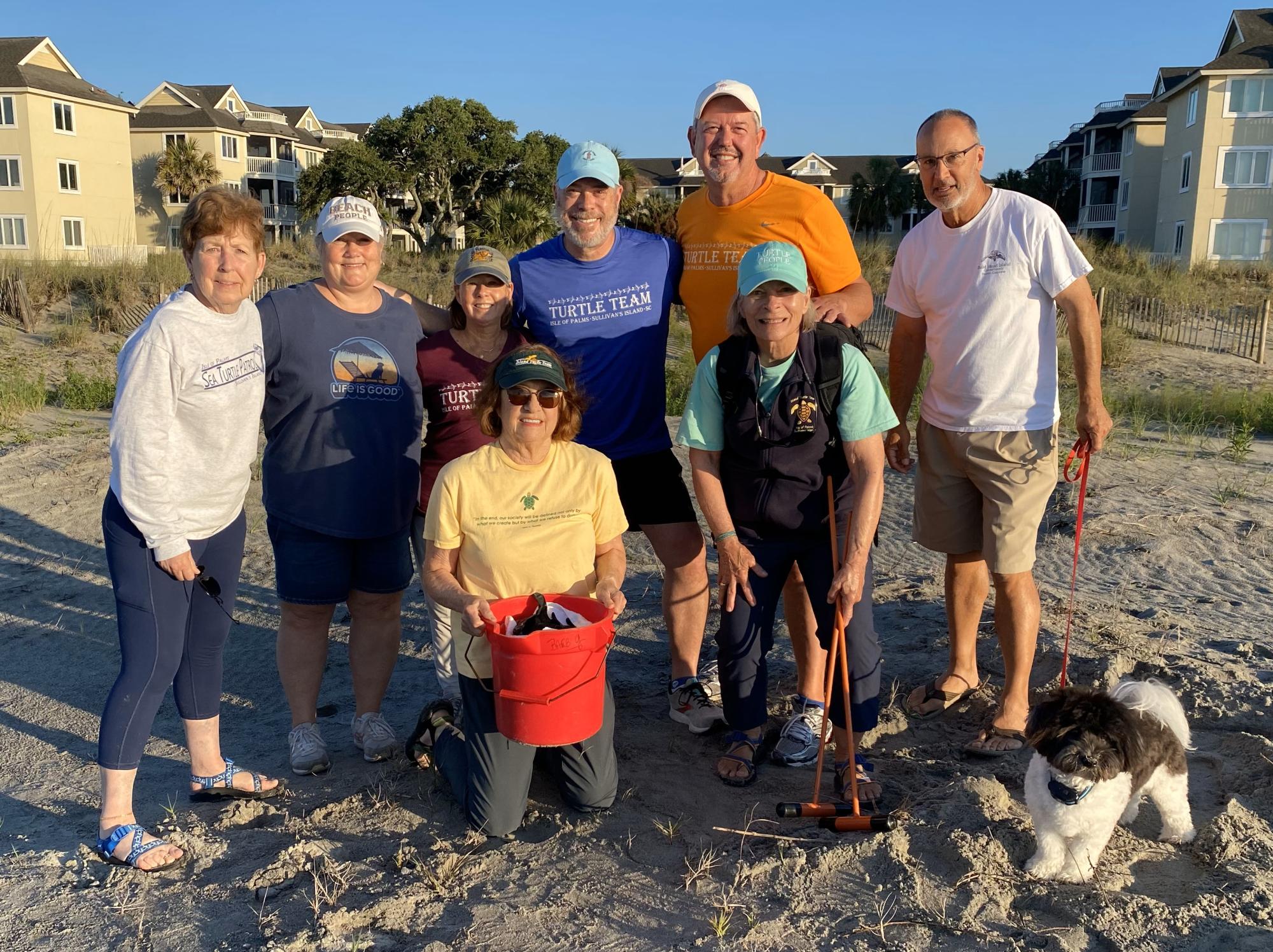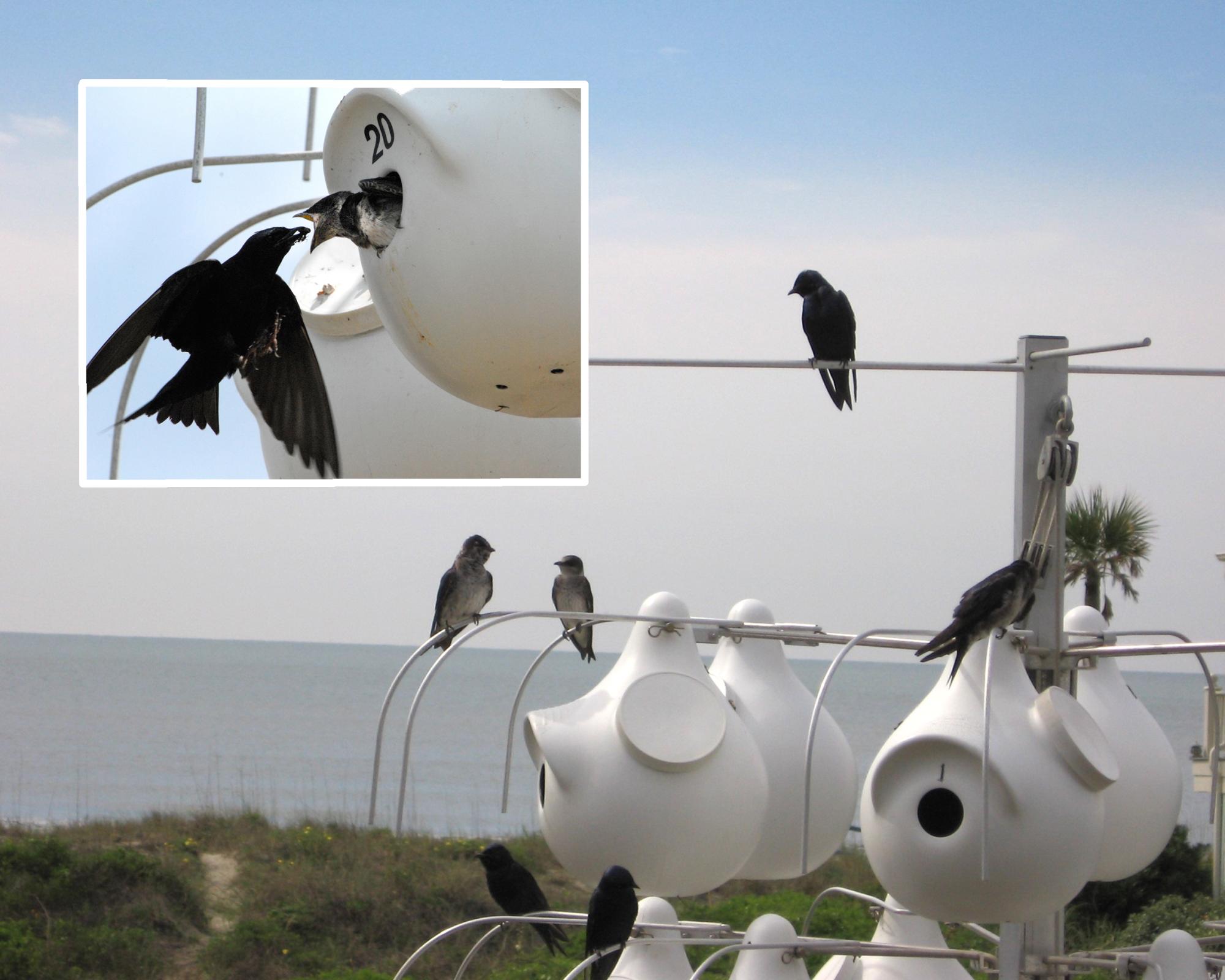Wild Life
IOP Turtle Team Announces First Loggerhead Nest of 2024

The first loggerhead nest of the 2024 season for the Island Turtle Team was laid in Wild Dunes at Port O’Call on May 16. This is about the usual time we begin to see nests even though many more had already been laid in our state. By May 22 four nests had been documented, including one at 48th Avenue, one at 202 Ocean Blvd and another at 406 Ocean Blvd. Those two in the 400 and 200 blocks close to Breach Inlet were in the path of the US Army Corps of Engineers Beneficial Use Project where hundreds of cubic yards of sand are scheduled to be added to the shoreline starting in June. The eggs were relocated away from that section.
Nest #1 was discovered by team members Allen Owens, Bryan Stephens, Holly Barron and Laura Lovins who patrol from the Property Owners’ Beach House to Dewees Inlet. It contained 105 eggs. After a DNA sample was taken for our genetics research project, the nest was relocated off of the flat beach to a safe dune nearby at the Property Owners’ Beach House for incubation in the warmth of the sand.
Here is more information from SCDNR:
Sea turtle clutches average 120 eggs and hatch after approximately 60 days. Nesting females may remain in South Carolina waters and continue to nest every two weeks, laying up to six nests per season. Throughout this stressful time, the turtles also abstain from eating. South Carolina beachgoers can help the state’s sea turtles by keeping beaches clean, turning beachfront lights out to avoid disorienting turtles, and giving all sea turtles and nests a wide and respectful berth when encountered on the beach.
Sea Turtle Nesting Season Reminders
- Report all sick/injured/dead sea turtles and nest disturbances to the SCDNR at 1-800-922-5431 so that staff/volunteers can respond as soon as possible. You can also call the police non-emergency line 843-886-6522.
- Respect boating laws and boat cautiously, especially in small tidal creeks where sea turtles like to feed. Boat strikes have emerged as the leading cause of death for sea turtles in South Carolina.
- Keep artificial lights off the beach at night during nesting season – this includes beachfront property lights and flash photography, which can disorient nesting mothers and hatchlings.
- Always respect sea turtles by observing them from a distance on the beach. Individuals that violate federal law by harming or interfering with sea turtles or their nests can be subject to civil penalties of up to $25,000 and up to a year’s imprisonment.
- Keep our beaches and ocean clean by avoiding single-use plastics. Plastic bags and balloons are among the most common trash items found on South Carolina beaches and can cause injury or death when sea turtles mistake them for food.
Mary Pringle, Island Turtle Team
How to: Provide Housing for Purple Martins

Purple Martins are the largest species of swallow in North America. They spend winters in South America and return to the same sites in the northern hemisphere each summer to breed. “Scouts” (older birds) begin to arrive in late February, but the migration continues into early June. Their diet consists completely of flying insects. Native Americans provided gourds for them because martins would sound an alarm when crows would attack their crops. With the destruction of old-growth forests, these colonial cavity nesters are now dependent on humans for housing. But just putting up housing and not looking after them does more harm than good. They need to be protected from predators and competition with non-native birds trying to take over their housing.
The Purple Martin Conservation Association was founded thirty-six years ago, the year we started our colony. They have been our mentors and guided us in becoming successful landlords for these very special native birds we have grown to love. If you are interested, please visit the PMCA website at www.purplemartin.org This nonprofit group has more advice than what is outlined here as well as an online catalog that offers all the equipment described.
CHOICE OF HOUSING AND POLE: Each compartment, either gourd or house unit, should be about 12” square because each bird is about 9” long, with 5 or 6 chicks in the nest as they grow. Think of a bunch of bananas. Units 6” square are NOT adequate. Ideal are large gourds made of heavy white plastic for heat control, having an opening that can be unscrewed for checking the nests. Heavy aluminum poles are square to prevent rotation. The house or gourds can slide down with a rope or boat winch with pulleys for easy lowering and necessary maintenance.
PLACEMENT: Martins require an open area not under or close to trees or heavy shrubbery. This is because their beautiful aerobatic flight pattern requires lots of space. They avoid a site that is not open because predators such as Cooper’s hawks can hide to attack them if there is tree cover. The minimum suggested distance from trees or buildings for a colony is 40 feet.
ATTRACTION AIDS: It might take a few years to start a new colony. There are things that can help. These include playing a recording of their song to others curious enough to investigate. Pine straw should be placed in the nest cavities each year to make them look “lived in.” You can even order decoys to attract other martins. We keep a decoy on the perch above our gourds for the purpose of fooling hawks who might swoop in and grab the slowest-moving bird.
MANAGE FOR PREDATORS & UNWANTED NESTERS: If you want martins, you must keep non-native English sparrows and European starlings who are also cavity-nesters out. This can be done by trapping them and removing their nests. Pole guards that look like stovepipes should be put on the pole to prevent climbers such as rat snakes and raccoons. We have a friend whose pole cannot use the stove pipe design, so we tie bird netting around the base of the pole to keep snakes from climbing it. “Owl guards” in the form of bars attached to gourds can prevent aerial predators (owls, hawks and crows) from reaching in and pulling out nestlings.
ROUTINE MAINTENANCE: Nest checks are recommended on a regular basis once the eggs are laid. Martin “landlords” all over the country and in Canada can participate in a citizens’ science project called Project Martinwatch where we send in data about each nest and its outcome at the end of the season. While doing this we can spot problems with nest mites and other parasites that might cause problems for the nestlings. That is why our gourds are numbered. It is recommended that when the chicks are half grown, that the old pine straw nests be replaced with clean ones. This helps ensure the health of the birds who stay in the nest being fed by their parents for about 30 days. You can also see if starlings or sparrows are laying eggs and remove them. At the season’s end it is important to remove the used nests, clean out the units, take them down, or at least plug up the entrance holes to prevent other birds from taking over and keeping martins out the next spring.
Being a landlord does involve some time and commitment. But the rewards of interacting with and providing for these very special native birds is well worth it. As my husband says, “Watching them is better than TV.”
Mary Pringle
IOP Environmental Advisory Committee
For the Island Eye News